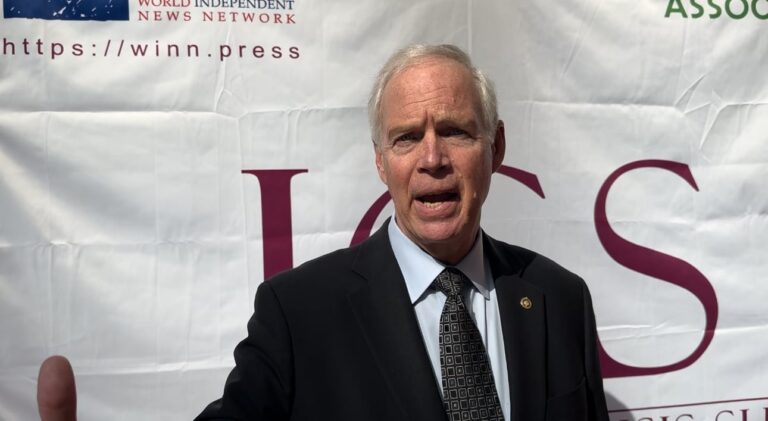Heading out the door? Read this article on the new Outside+ app available now on iOS devices for members!
Download the app.
One morning, my five year old was having a particularly tough time getting ready for school. She refused to get out of bed and was deeply upset in the way only little kids can be, screaming about something that I deemed insignificant. Maybe I had packed her a lunch she didn’t like or I helped her little brother before giving her a morning hug. She was probably just tired and having a hard time self-regulating. That’s a lot to ask for a five year old!
I stayed calm for quite a while, but then, as happens sometimes, I lost my temper. Of course, I’m a yoga practitioner, so what I yelled was, “You have the ability to control your reaction to things!”
The irony of me being unable to control my own reaction and literally shouting this at my child was so hilarious that I had to laugh at myself. That pulled us out of our funk and we were able to get on with our day.
In that moment, my daughter saw me as a flawed and imperfect person as well as someone who can laugh at her mistakes. As much as I want to emulate qualities of compassion, kindness, and responsibility, I also want to show my daughter that it’s okay to mess up sometimes. Being able to be kind to ourselves when we make mistakes allows us to do the same for others. This is what it means to lead a life of humility.
What Exactly is Humility?
Humility is not something that can be learned by reading a book, taking a workshop, scrolling through social media, or participating in a teacher training. It’s a way of being, a quality we carry with us that colors how we move through the world.
Some of us come from cultures in which humility toward our teachers and elders seems innate because it’s been modeled for us from birth. As long as we can maintain our agency and integrity within those social dynamics, this is a gift.
For those of us who don’t swim in those cultural waters, humility can be cultivated in other ways. We can place ourselves in unfamiliar situations in which we don’t know much with what we call a “beginner’s mind,” an orientation in which we accept that we are brand new to something. We understand that we are starting from scratch so our role is simply to observe and learn.
Most of us are in this position when we begin a yoga practice. We start off not knowing how to breathe properly, how to enter postures with care, or how to calm the mind. Over time, and hopefully under the guidance of a skilled teacher, we accumulate experience and wisdom.
Humility In Practice
A certain amount of humility is required for us, as students, to be able to receive the teachings. If our egos are in the front seat, we tend to take constructive feedback personally and stymie our own transformation. In order to remain open and humble, we need to be able to trust that our teachers have placed their egos aside as well.
At some point, if we feel called to share the practice of yoga with others, we become beginners again as we learn how to teach. It’s during these early stages of learning how to teach yoga that many people lose their humility.
There is a psychological phenomenon called the Dunning-Kruger effect, in which those who know a little about something think they know quite a lot. Conversely, those who are experts in a field tend to underestimate their knowledge, or rather, they simply understand how much there is still left to learn.
I’ve seen this phenomenon play out many times. Not long ago, a new student started attending our shala. She had recently graduated from a yoga teacher training and had been teaching classes at another studio. She came to us because she wanted to build a dedicated Ashtanga yoga practice.
She was physically capable but struggled a bit with the Mysore-style approach, in which we teach individual students a set sequence of postures that they memorize. The sequence can be adapted based on any student’s needs, and will change with the student over time, but the idea is to become comfortable enough with the sequence that it becomes integrated in the body and in the nervous system.
This student asked us specific questions about how to point her foot and other minute details. I sensed that her questions came not from a genuine desire to learn, but were meant to demonstrate to us that she knew what she was doing. If she had come to class regularly with a genuine desire to learn, she would have picked up the practice quickly. Instead, her attendance became sporadic and then stopped entirely.
Another student, someone who had been practicing and teaching a different style of yoga for years, came to us a few months ago, wanting to learn how to Handstand in the middle of the room. We started her just like any other new student, with Surya Namaskar and instructions on how to breathe properly and gently engage the bandhas.
The breath and bandhas are at the heart of our practice, facilitating a steady and open body and mind. Starting there is essential. Focusing on the breath and bandhas also builds a strong foundation, which will eventually allow students to work toward physically demanding postures, including Handstand. Within her first week, this student let us know that she felt she wasn’t getting enough attention and ended up leaving.
Experienced teachers are not immune to a lack of humility. Teachers who lead large classes and workshops sometimes place themselves on literal pedestals. This is perhaps a way to allow students to see them, but it also perpetuates a power dynamic. I’ve also heard of popular teachers refusing to engage with students during workshops they are leading, sometimes by distracting themselves with their phones.
There are some teachers have learned how to display humility without actually integrating it. They may bow to an altar before class starts but then leave the room afterward and speak down to their students and fellow teachers. Or they may deflect positive feedback in front of a crowd as a show of false modesty but then search for that affirmation in the comments section of a social media post.
Whether we teach to a stadium filled with dedicated students or to a handful of new students at a community center, we need to ask ourselves why we’re doing what we’re doing. Are we teaching in order to rack up followers and accumulate sponsorships? Are we honoring the inner experiences of the people we’re working with and engaging in a process of personal growth?
How We Learn Humility
Years of experience as a mother, teacher, and leader have taught me that true humility is about letting go of perfectionism. It’s not a performance.
At our shala, we’re not terribly concerned with trying to get folks to stick around if they’re not feeling aligned with what we do and how we practice. We view the teaching of yoga as an act of service. Stable in our sense of self and understanding that none of us are all that special, we remain humble. Life, then, becomes our teacher. We make mistakes, we correct, realign, and then stumble again. This is one of the reasons why it’s imperative that yoga teachers cultivate full, rich lives off the mat.
Genuine humility affords us the gift of seeing everyone as our equals. Before I was in the position of leading a community and running a shala, I had no idea about the challenges and nuances involved. It was easy for me to look at studio owners and think about all the changes I would make or how differently I would run things. I now have much more compassion for anybody in a leadership position or running a business. I understand that making mistakes is inevitable and it’s one of the ways in which we cultivate equanimity.
We play different roles in various parts of our lives, but ultimately, we can only feel secure in our sense of self and our sense of belonging when we become attuned to our own imperfections, accepting them in the process. In this way, we see that everyone else has their struggles, too. We take ourselves a little less seriously. From that lack of seriousness, we’re able to experience joy.
The word “humility” comes from the Latin root word “hum,” meaning “ground.” When we’re humble, we literally remain grounded. That’s why I practice yoga, to stay grounded and joyful. That’s also why I teach. Sharing this practice with people in a lighthearted way helps me keep my feet on the ground and expands my capacity for joy. My hope is that yoga practitioners everywhere, students and teachers alike, experience the transformative power of being humble.
About Our Contributor
Pranidhi Varshney is the founder of Yoga Shala West, a community-supported Ashtanga Yoga studio in West Los Angeles. She is also mother to two children who she describes as “courageous and wise little beings.” The thread that runs through all her work is the desire to build community and live from the heart.
This content was originally published here.




















